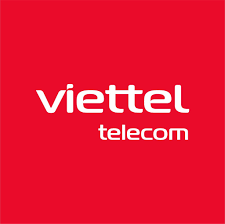Viettel said that the newly acquired spectrum will support its goal of reaching 99% population coverage across Vietnam by 2030
In sum – what you need to know:
Viettel secures key 700-MHz band – The Vietnamese telco acquired the B2-B2′ spectrum block for $75.2 million after multiple failed auctions.
National coverage and IoT push – Viettel plans to use the band to reach 99% population coverage by 2030 and scale 5G use cases across smart cities, agriculture, logistics, and more.
Growing 5G competition – With 20,000 new 5G base stations planned for 2025, Viettel ramps up its lead against VNPT and MobiFone, both of which launched 5G services in late 2024 and early 2025.
Vietnamese state-owned telecom operator Viettel has secured a 700 MHz spectrum block for VND1.95 trillion ($75.2 million), a frequency band the government has been attempting to auction for the past several years.
According to state media, Viettel won the rights to the so-called B2-B2′ block (713–723 MHz and 768–778 MHz) earlier this week. The license is valid for 15 years and will be used to support both 4G and 5G connectivity, including Internet of Things (IoT) applications such as smart cities, precision agriculture and intelligent transportation systems.
In a recent LinkedIn post, Viettel highlighted the advantages of the 700 MHz band, particularly its wide propagation range, which enables better indoor coverage in dense urban environments and cost-effective expansion into rural, mountainous, and remote areas.
The state-run carrier noted that the newly acquired spectrum will support its goal of reaching 99% population coverage across Vietnam by 2030. Viettel also plans to deploy over 20,000 5G base stations during 2025.
Previously allocated for analog television broadcasts, the 700 MHz band became available in 2020 after Vietnam completed its transition to digital TV. The country’s Radio Frequency Department (RFD) authorized the use of this spectrum band for the provision of 4G and 5G services in 2023.
Despite multiple attempts by the Ministry of Information and Communications (MIC) to auction the band—most recently in February—prior efforts failed due to a lack of qualified bidders. Viettel had participated in all three previous attempts to auction this spectrum.
With the B2-B2′ block now awarded, two additional blocks remain unclaimed: the B1-B1′ block (703–713 MHz and 758–768 MHz) and the B3-B3′ block (723–733 MHz and 778–788 MHz).
In January, Viettel had informed that its 5G network reached 4 million subscribers after the company launched the service in October 2024.
The telco had said that these 4 million subscribers accounted for 70% of 5G-enabled devices within the coverage area of the carrier’s 6,500 5G base stations.
Viettel has established two 5G laboratories in Hanoi and Ho Chi Minh City. These facilities enable developers to test applications and address challenges such as signal interference or protocol mismatches, ensuring that new IoT and 5G technologies are well-suited for Vietnam’s market.
In October 2024, Viettel had launched what it claimed to be Vietnam’s first commercial 5G service. At the time of the launch, Viettel said it had deployed network infrastructure to provide 5G services to all 63 localities in Vietnam, focusing in particular on tourism sites, seaports, airports, industrial parks, hospitals and schools.
The telco noted that the new 5G service can offer connection speeds of up to 1 Gbps, with nearly zero ping. Viettel is deploying the 5G service using both Standalone (SA) and Non-Standalone (NSA) architectures.
For business customers, Viettel said its 5G network will provide a total of 130 use case options for industrial production, smart city, logistics-transport, agriculture, healthcare, education and energy sectors, integrated with cloud, artificial intelligence (AI) and Internet of Things (IoT) technologies.
Rival operator VNPT launched 5G services in December 2024, while MobiFone has officially launched its 5G mobile services in March 2025.
MobiFone’s 5G service operates on the 3.8-3.9GHz frequency band, utilizing both 5G NSA and 5G SA architectures.

